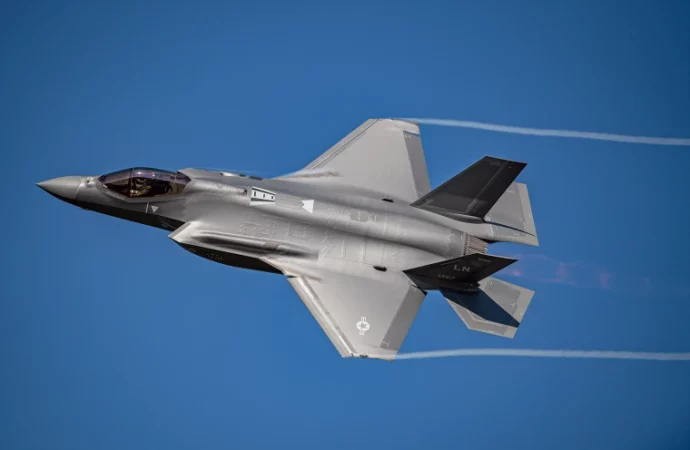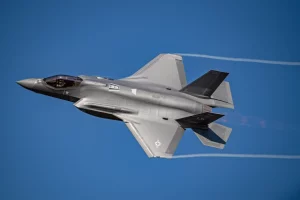France’s decision to send Mirage fighter jets to Ukraine marks a significant development in the ongoing geopolitical landscape. Amidst escalating tensions in Eastern Europe, this move holds profound implications not only for France and Ukraine but also for the broader European security architecture. In this article, we delve into the rationale behind France’s decision, analyze
France’s decision to send Mirage fighter jets to Ukraine marks a significant development in the ongoing geopolitical landscape. Amidst escalating tensions in Eastern Europe, this move holds profound implications not only for France and Ukraine but also for the broader European security architecture. In this article, we delve into the rationale behind France’s decision, analyze its potential impact, and consider the broader implications for regional security dynamics.
France’s Strategic Calculus
The decision to deploy Mirage fighter jets to Ukraine underscores France’s commitment to bolstering the security of its Eastern European allies in the face of perceived aggression from Russia. France, along with its European counterparts, has been closely monitoring the situation in Ukraine, particularly in light of Russia’s annexation of Crimea and its ongoing support for separatist movements in Eastern Ukraine. By sending military support, France aims to signal solidarity with Ukraine while deterring further Russian aggression in the region.
Analysis of Mirage Fighter Jets
The Mirage fighter jets, renowned for their versatility and combat capabilities, represent a formidable addition to Ukraine’s air defense capabilities. With their advanced avionics and weaponry systems, Mirage jets can effectively patrol Ukrainian airspace, conduct reconnaissance missions, and provide air support in the event of hostilities. Moreover, their deployment serves as a visible demonstration of France’s military commitment to Ukraine, bolstering the latter’s deterrence posture vis-à-vis Russia.
Comparative Analysis: Mirage vs. Russian Aircraft
In comparing Mirage fighter jets to their Russian counterparts, such as the Sukhoi Su-27 or Su-35, several factors come into play. While Russian aircraft boast impressive maneuverability and firepower, Mirage jets offer superior technological sophistication and integration with Western defense systems. Furthermore, Mirage jets benefit from NATO interoperability, enabling seamless coordination with allied forces in the region. This stark contrast underscores the strategic advantage conferred by France’s military support to Ukraine.
Implications for Regional Security
France’s decision to send Mirage fighter jets to Ukraine is likely to reverberate across the broader European security landscape. On one hand, it reaffirms NATO’s commitment to collective defense and sends a clear message to Russia that aggressive actions will be met with a unified response from Western allies. On the other hand, it risks exacerbating tensions with Moscow, potentially leading to further escalation in an already volatile region. As such, careful diplomatic maneuvering will be essential to prevent any unintended escalation and preserve stability in Eastern Europe.
Analysis Table:
| Aspect | Mirage Fighter Jets | Russian Aircraft (Su-27, Su-35) |
|---|---|---|
| Technological Sophistication | Advanced avionics and weaponry systems | Impressive maneuverability and firepower |
| Interoperability with NATO | Seamless coordination with allied forces | Limited interoperability |
| Combat Capabilities | Versatility in air defense operations | Focus on air superiority missions |
| Integration with Western Defense | Fully integrated with Western systems | Reliance on indigenous systems |
Comparative Table:
| Aspect | Mirage Fighter Jets | Russian Aircraft (Su-27, Su-35) |
|---|---|---|
| Maneuverability | High | High |
| Firepower | Advanced | Advanced |
| Avionics | Western technology | Indigenous |
| Interception Capabilities | Effective in varied scenarios | Primarily air superiority missions |
| Combat Experience | Battle-tested in various conflicts | Extensive operational history |
These tables provide a comparative analysis of Mirage fighter jets and Russian aircraft, highlighting the respective strengths and weaknesses of each platform in the context of France’s decision to send military support to Ukraine.
Conclusion
France’s plan to send Mirage fighter jets to Ukraine represents a significant strategic move with far-reaching implications for regional security dynamics. By providing military support to Ukraine, France aims to bolster the latter’s defense capabilities while sending a strong signal of solidarity with Eastern European allies. However, the decision also carries inherent risks, given the potential for heightened tensions with Russia. Moving forward, effective diplomatic engagement and multilateral cooperation will be crucial in navigating the complex geopolitical landscape of Eastern Europe.

















